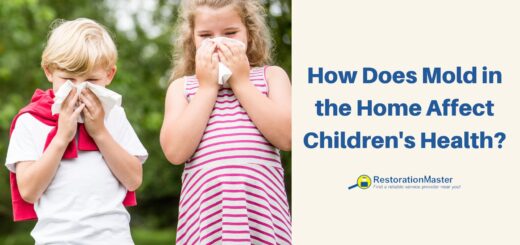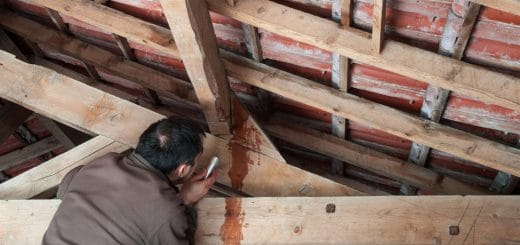What Is White Mold and Why Is It Dangerous?

Finding moldMold is a type of fungus that grows in damp or humid conditi... More in your residential or commercial property is a problematic issue, not only due to the damage it can cause to your property but also because of the potential health risks for those exposed. While “mold” is a broad term that includes many different species, any moldMold is a type of fungus that grows in damp or humid conditi... More growth in your space poses a hazard. Understanding the specific characteristics of each mold species is crucial for determining the most effective way to address the problem.
Continue reading to learn more about what white moldMold is a type of fungus that grows in damp or humid conditi... More is, how you can identify it, what causes moldMold is a type of fungus that grows in damp or humid conditi... More growth, what hazards it can cause, and how to treat white mold growth.
What Causes Mold Growth?
MoldMold is a type of fungus that grows in damp or humid conditi... More sporesSpores are microscopic reproductive units of fungi or mold t... More are naturally found in the air, making it easy for them to trigger moldMold is a type of fungus that grows in damp or humid conditi... More growth when the right conditions exist. While these sporesSpores are microscopic reproductive units of fungi or mold t... More are generally harmless in small quantities, they become a problem when they settle on damp surfaces. To activate, moldMold is a type of fungus that grows in damp or humid conditi... More sporesSpores are microscopic reproductive units of fungi or mold t... More need moisture, which is why areas with high humidityHumidity is the amount of moisture or water vapor present in... More or water leaks are specifically vulnerable.
Building materials like wood and drywall contain cellulose, which is a primary organic food source for moldMold is a type of fungus that grows in damp or humid conditi... More. When these materials have sustained water damage, whether from floodingFlooding is the overflow or accumulation of water in areas t... More, leaks, or condensation, moldMold is a type of fungus that grows in damp or humid conditi... More is more likely to grow since they have a moisture source. If moldMold is a type of fungus that grows in damp or humid conditi... More growth is left unaddressed, it can quickly spread and cause extensive damage.
What is White Mold?
White moldMold is a type of fungus that grows in damp or humid conditi... More is a term used to describe several moldMold is a type of fungus that grows in damp or humid conditi... More species that are white in appearance and have a powdery texture. Among the species of white mold that are often found growing in homes are Penicillium, Cladosporium, and Aspergillus. However, white is just one of the colors that such moldMold is a type of fungus that grows in damp or humid conditi... More can appear in. These moldMold is a type of fungus that grows in damp or humid conditi... More species can also be black, gray, or green in color.
If moldMold is a type of fungus that grows in damp or humid conditi... More is white, it may be due to the lack of pigmentation in the moldMold is a type of fungus that grows in damp or humid conditi... More sporesSpores are microscopic reproductive units of fungi or mold t... More, which can be influenced by the type of surface or material the moldMold is a type of fungus that grows in damp or humid conditi... More is growing on. In some cases, moldMold is a type of fungus that grows in damp or humid conditi... More may start as white in its early developmental stages and then change colors once sporesSpores are microscopic reproductive units of fungi or mold t... More have been produced naturally.
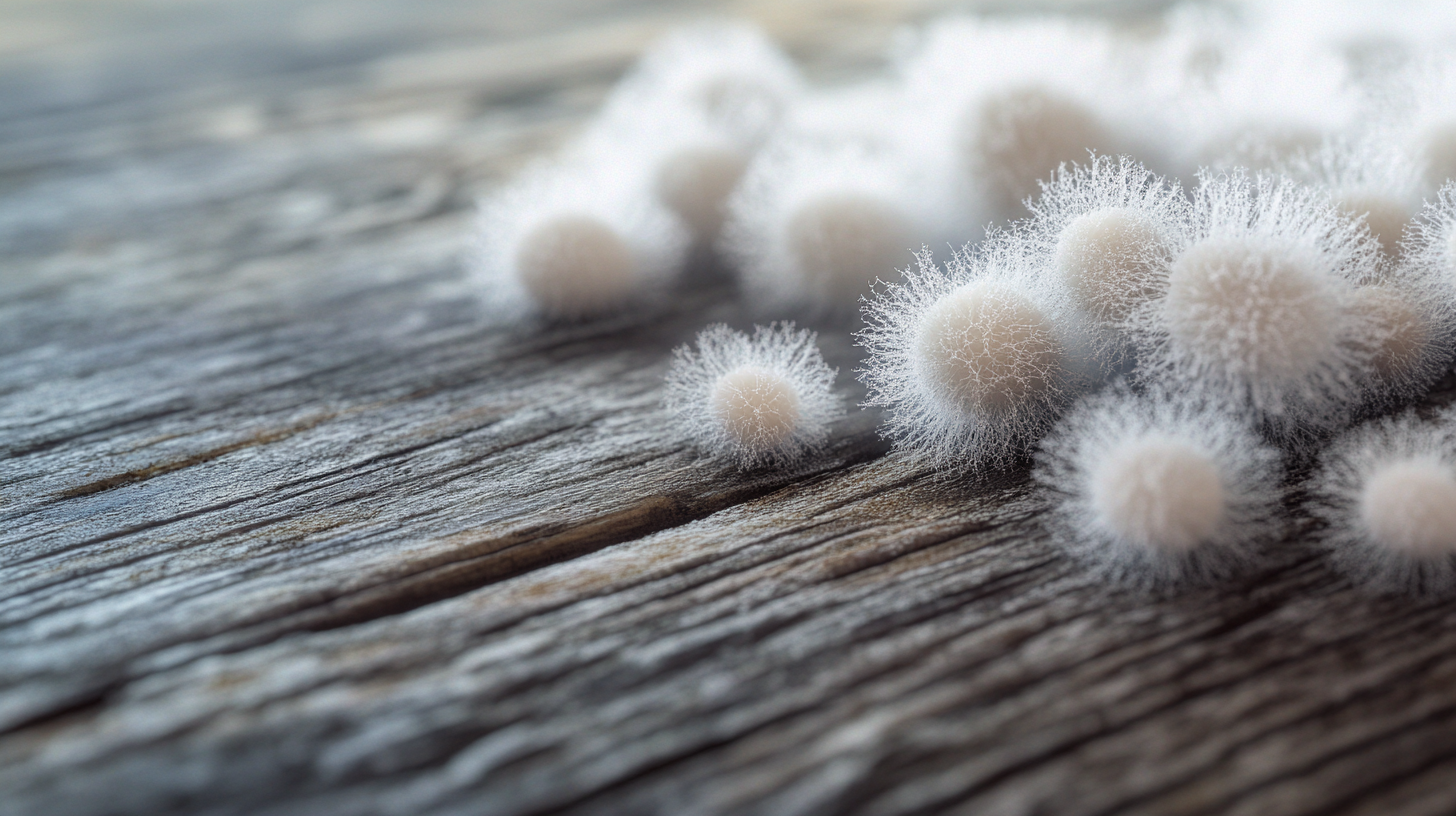
How Do You Identify White Mold?
In addition to its white appearance and powdery texture, white moldMold is a type of fungus that grows in damp or humid conditi... More can usually be found growing on drywall, wood, and other building materials that contain cellulose. However, it can sometimes be confused with other white substances, such as efflorescence and mildewMildew is a type of fungus that grows on damp surfaces, typi... More.
Efflorescence is a white, crystalline residueResidue is any leftover material, such as soot, dust, or che... More left behind when salt water evaporates. It typically forms on surfaces like brick, concrete, or stone. The type of surface can help you distinguish between efflorescence and white moldMold is a type of fungus that grows in damp or humid conditi... More, as moldMold is a type of fungus that grows in damp or humid conditi... More prefers porousPorous describes a material that contains small openings or ... More surfaces. You can also try to test the substance by adding water to the substance. If the substance dissolves, then it likely isn’t moldMold is a type of fungus that grows in damp or humid conditi... More.
Mildew can also be confused with white moldMold is a type of fungus that grows in damp or humid conditi... More, but it generally only grows on plants or organic matter. If mildewMildew is a type of fungus that grows on damp surfaces, typi... More does appear on other surfaces, it won’t cause the same level of structural damage that moldMold is a type of fungus that grows in damp or humid conditi... More can. Identifying the affected material can help determine whether you are dealing with mildewMildew is a type of fungus that grows on damp surfaces, typi... More or white moldMold is a type of fungus that grows in damp or humid conditi... More.
What Makes White Mold Hazardous?
Like all types of moldMold is a type of fungus that grows in damp or humid conditi... More, white moldMold is a type of fungus that grows in damp or humid conditi... More poses serious health risks when people are exposed to it. Prolonged exposure can leadLead is a heavy metal that can be toxic to humans, especiall... More to more severe conditions such as anxiety, depression, insomnia, and even memory loss. Those with asthma are particularly vulnerable to complications from moldMold is a type of fungus that grows in damp or humid conditi... More exposure.
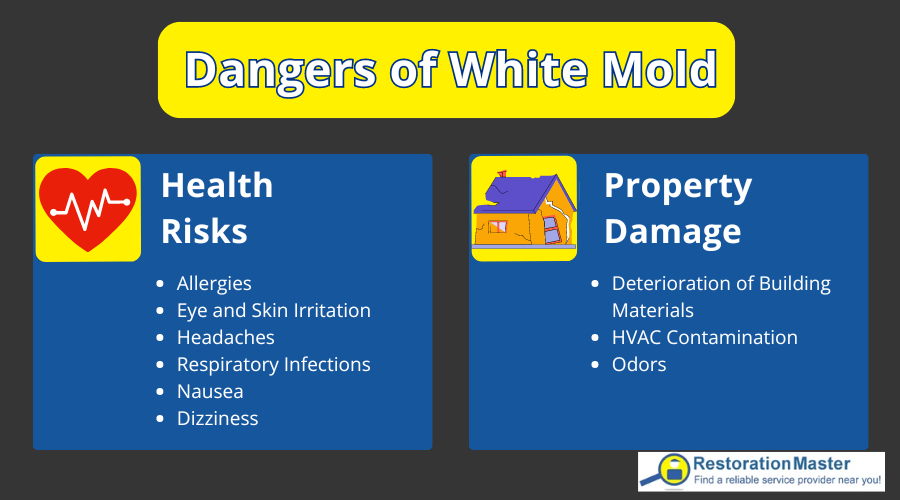
Health issues caused by white mold growth include:
- Allergies
- Eye and Skin Irritation
- Headaches
- Respiratory Infections
- Nausea
- Dizziness
White moldMold is a type of fungus that grows in damp or humid conditi... More also threatens your property by feeding on building materials like wood and drywall. As it consumes these materials, it gradually weakens their structural integrity, which can eventually leadLead is a heavy metal that can be toxic to humans, especiall... More to significant damage. In severe cases, this can compromise the stability of your property and result in the need for costly reconstruction services. Addressing moldMold is a type of fungus that grows in damp or humid conditi... More growth promptly is essential to prevent serious deterioration and protect both health and property.
How Do You Treat White Mold?
Encountering moldMold is a type of fungus that grows in damp or humid conditi... More growth in your home or business can be alarming, as it poses risks to both your health and the integrity of your property. Acting swiftly is crucial to mitigateTo mitigate is to reduce or limit the severity of damage, ri... More potential damage. While there are some do-it-yourself moldMold is a type of fungus that grows in damp or humid conditi... More removal techniques, enlisting a professional mold removal company is often the safest and most effective solutionA solution is a homogeneous mixture of two or more substance... More, especially for larger infestations. Here are the steps to take when you discover moldMold is a type of fungus that grows in damp or humid conditi... More:
Assess the Situation
Identify the extent of the moldMold is a type of fungus that grows in damp or humid conditi... More growth and the affected areas. If it’s a small patch, you might consider addressing it yourself, but larger infestations should be handled by professionals.
Avoid DIY Removal Methods
Attempting to remove moldMold is a type of fungus that grows in damp or humid conditi... More on your own can expose you to harmful sporesSpores are microscopic reproductive units of fungi or mold t... More, increasing your risk of health issues. You may also lack the necessary knowledge and equipment to manage the situation safely.
Contact Professionals
Reach out to a certified mold remediationMold remediation is the process of identifying, removing, an... Moreremediation companyA remediation company is a business specializing in cleaning... More. Trained technicians will arrive equipped with the right tools, cleaning products, and protective gear to handle the job safely and effectively.
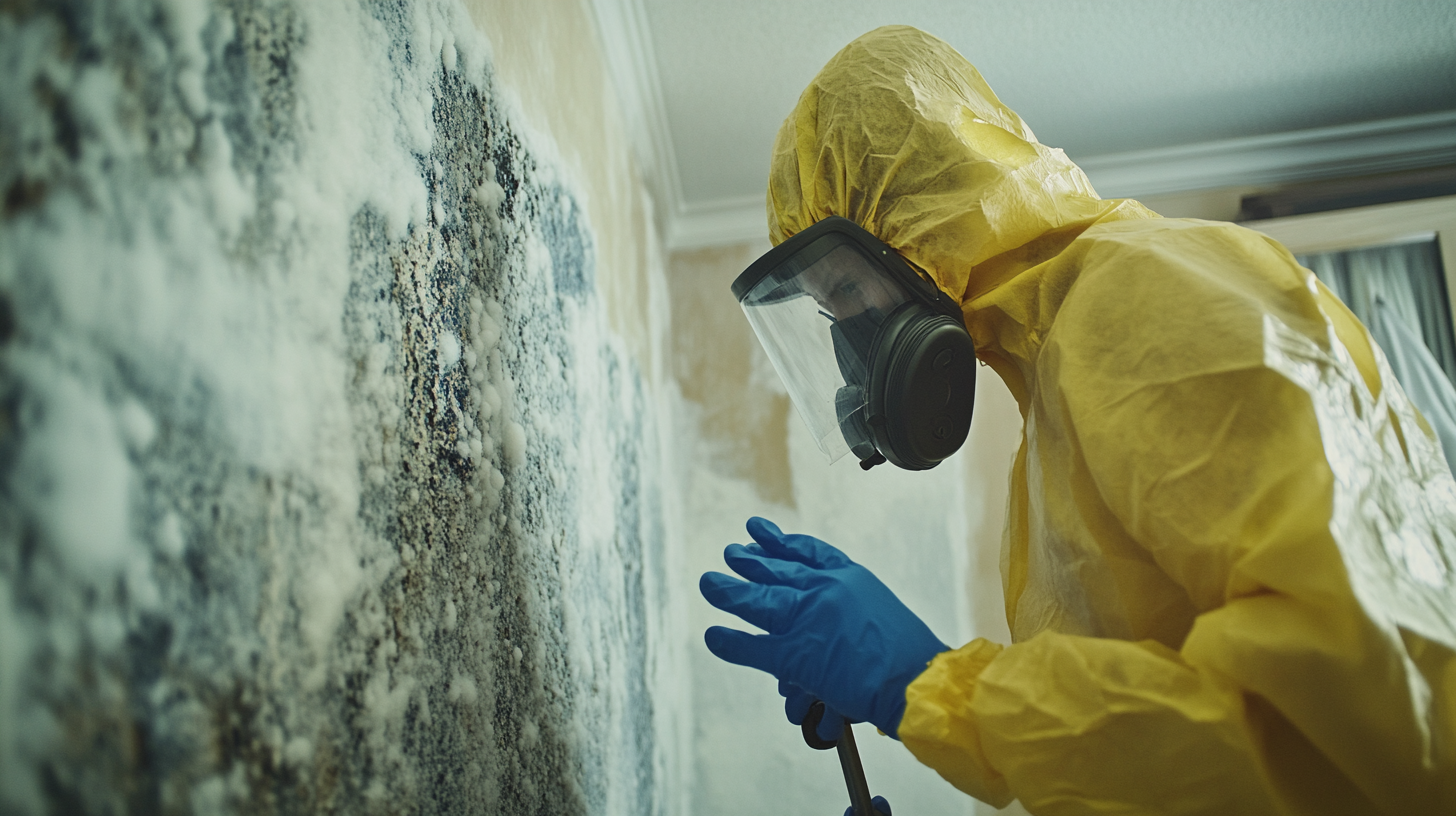
Mold Remediation Process
The professionals will assess the mold growth, contain the affected area, remove the moldMold is a type of fungus that grows in damp or humid conditi... More using specialized techniques, and address the source of moisture that allowed the moldMold is a type of fungus that grows in damp or humid conditi... More to thrive.
Prevent Future Growth
After the removal process, the technicians will offer advice on how to prevent moldMold is a type of fungus that grows in damp or humid conditi... More from returning, such as improving ventilationVentilation is the process of exchanging or circulating air ... More and addressing humidityHumidity is the amount of moisture or water vapor present in... More issues.
By relying on mold removal experts, you not only ensure that the moldMold is a type of fungus that grows in damp or humid conditi... More is removed properly, but you also protect yourself from exposure to potentially harmful substances.
Prioritizing Safety and Property Care
In conclusion, facing a moldMold is a type of fungus that grows in damp or humid conditi... More infestation in your home or business is a serious issue that needs immediate attention. Although DIY methods seem like the optimal way to handle white moldMold is a type of fungus that grows in damp or humid conditi... More growth, the risks associated with exposure and the potential for improper removal make professional mold remediationMold remediation is the process of identifying, removing, an... More the safest and most effective resolution.
By reaching out to moldMold is a type of fungus that grows in damp or humid conditi... More removal and remediation specialists, you protect your health and the integrity of your property.










